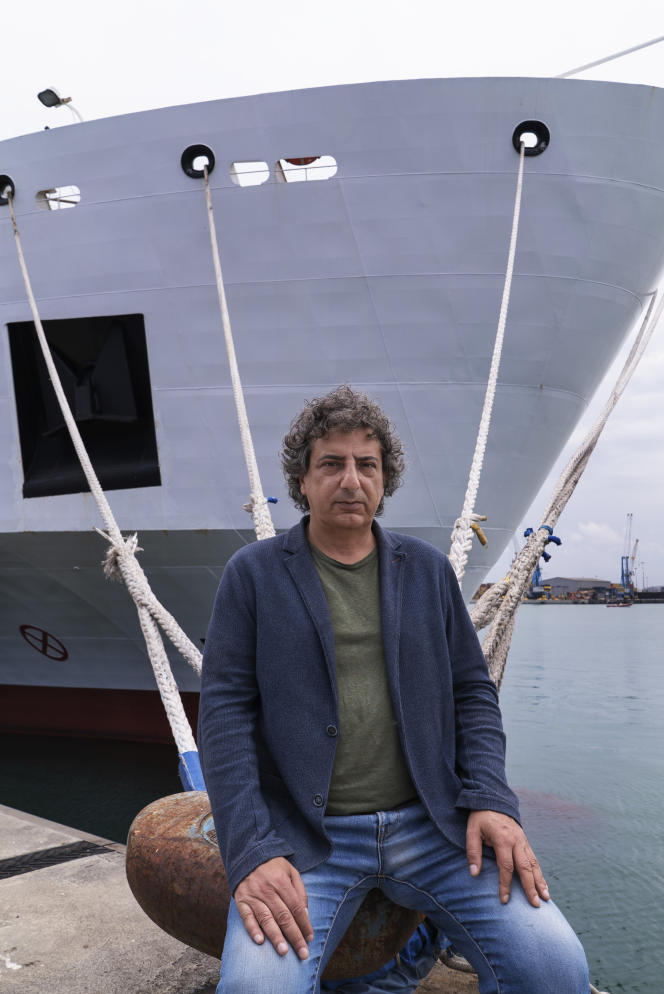On Sergio Scandura’s screen, the moving map of the central Mediterranean evokes a strange night sky between Italy, Libya and Tunisia, streaked with luminous signals. Small, brightly colored figures each represent a ship. Most often, it is a freighter, whose tracking platform indicates the destination, size, tonnage, flag… From port to port, their aggregated trajectories keep the two shores together. But what Sergio is looking for is elsewhere, in the fault, in the chasm that separates them. He seeks the shape of a border and the traces of those, invisible, who try to cross it.
From Catania, a Sicilian port planted on the borders of Europe and Africa, this Mediterranean correspondent for a one-of-a-kind media, Radio Radicale, has become the patient archivist of a geographical area that haunts European political discourse. . The 57-year-old journalist has vowed to document every rescue operation, every pushback to African shores, every shipwreck, as what he describes as a deeper and deeper opacity sinks into the sea.
“Since 2018, the authorities have stopped communicating about rescues and interceptions. They no longer publish precise data on arrivals, nothing on the exact origins, there are very few images, journalists cannot follow them and are even often excluded from the places where the landings take place”, explains Sergio Scandura. It is only by crossing his laborious research in open sources with the fragmentary indications of those he calls his “deep throat” that he can barely succeed in reconstituting information that his former interlocutors, formerly talkative, from the navy, the coastguards, the customs police, no longer give to anyone.
“They do the best job in the world in secret”
Thus, the day before, he learned from an informant that three fishing boats good for scrapping were on their way from Cyrenaica (in Libya) to Italian waters with an average of five hundred people on board. An air traffic tracing platform enabled him to detect the night flight of a device from the European Border and Coast Guard Agency, Frontex, towards the intervention area.
He was then able to confirm, thanks to two anonymous informants, the rescue of 1,600 people, disembarked discreetly from the boats of the Italian coast guard, the navy, the customs police and Frontex. These speedboats are undetectable and their rescue missions at sea are carried out at the limit of confidentiality. “Bringing people to Italy does not fit with a discourse on controlling the flow of migrants, says the journalist. They are therefore doing the best job in the world in secret because, in this context, saving lives openly would have a political cost. »
You have 76.93% of this article left to read. The following is for subscribers only.
